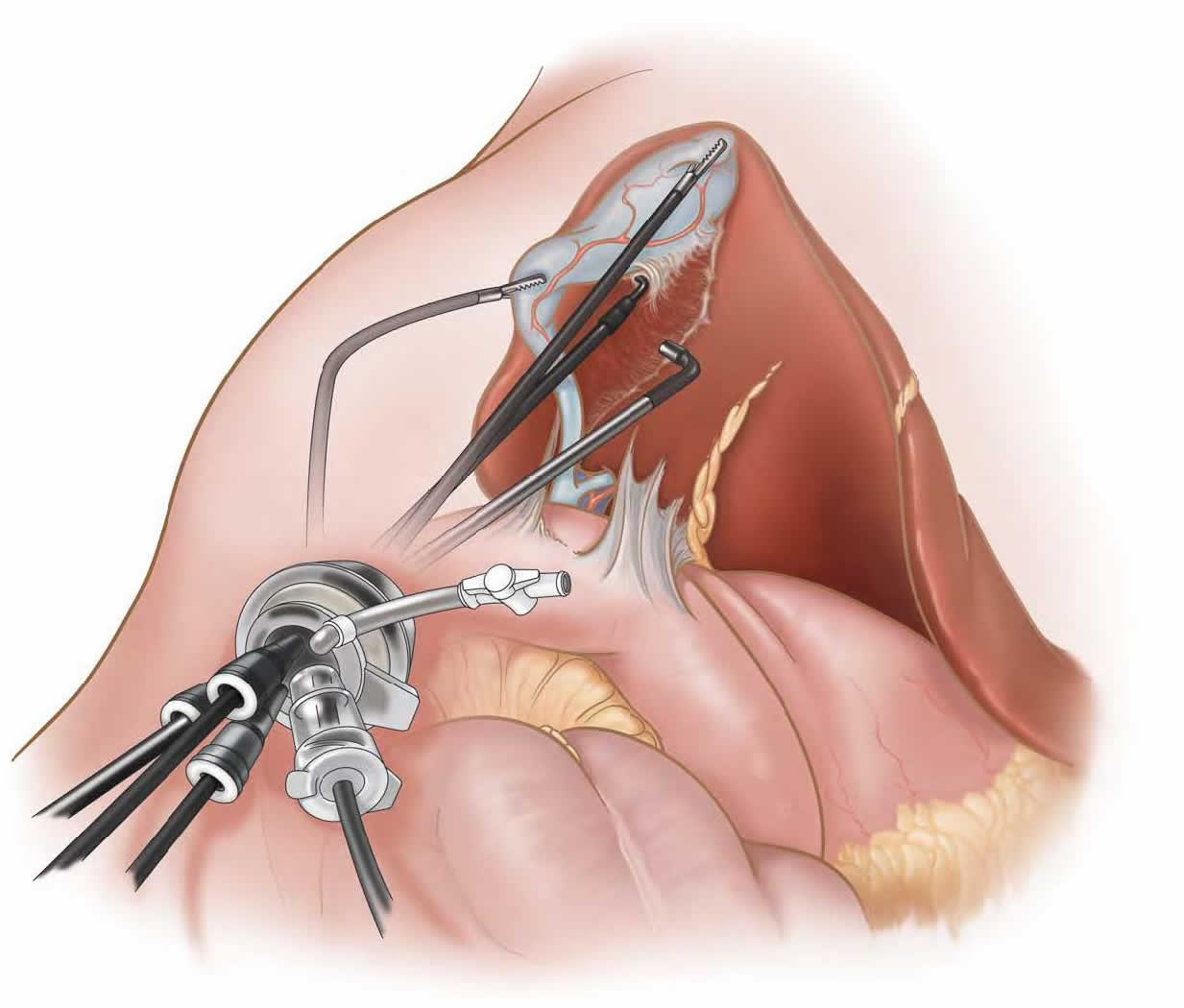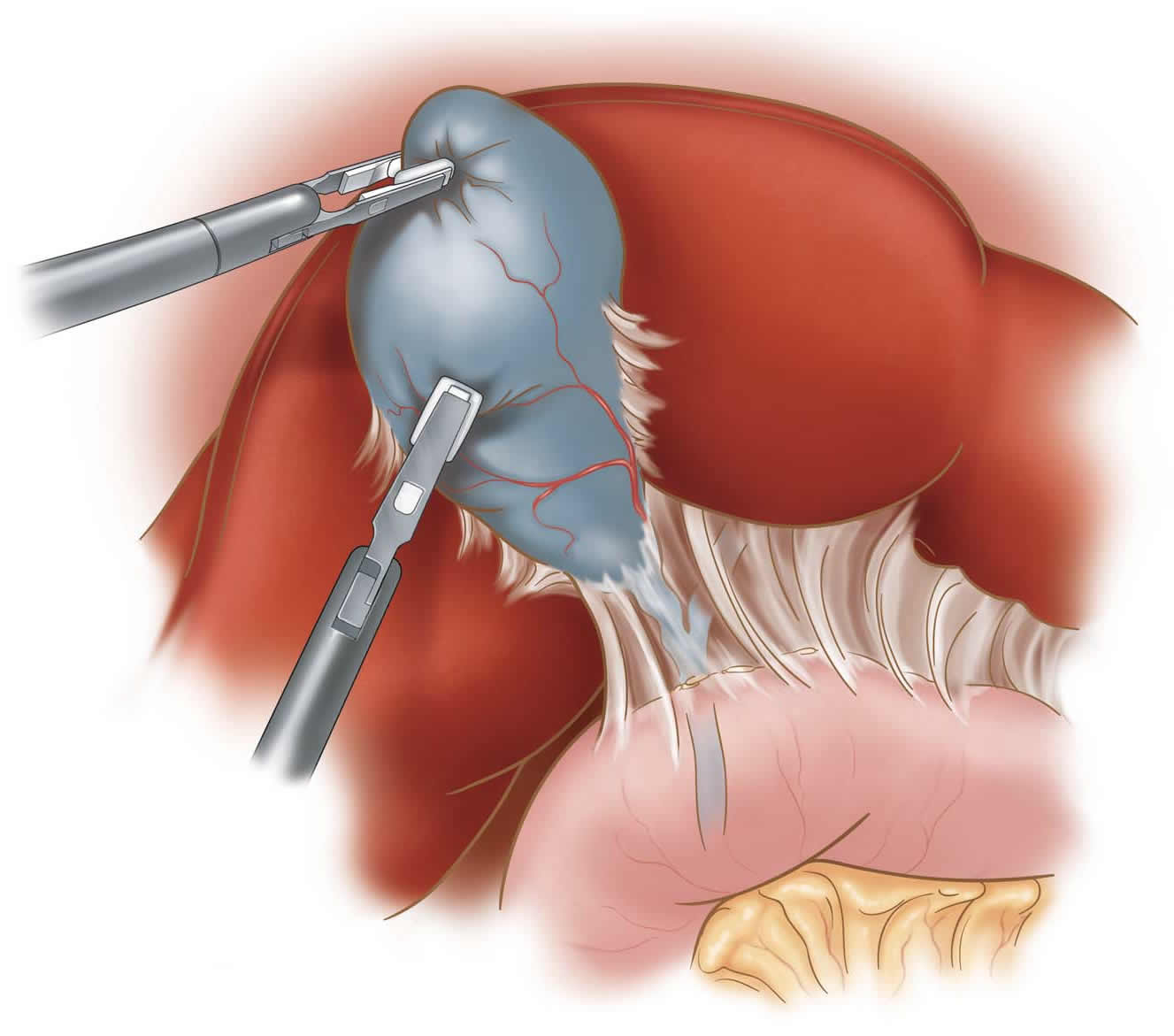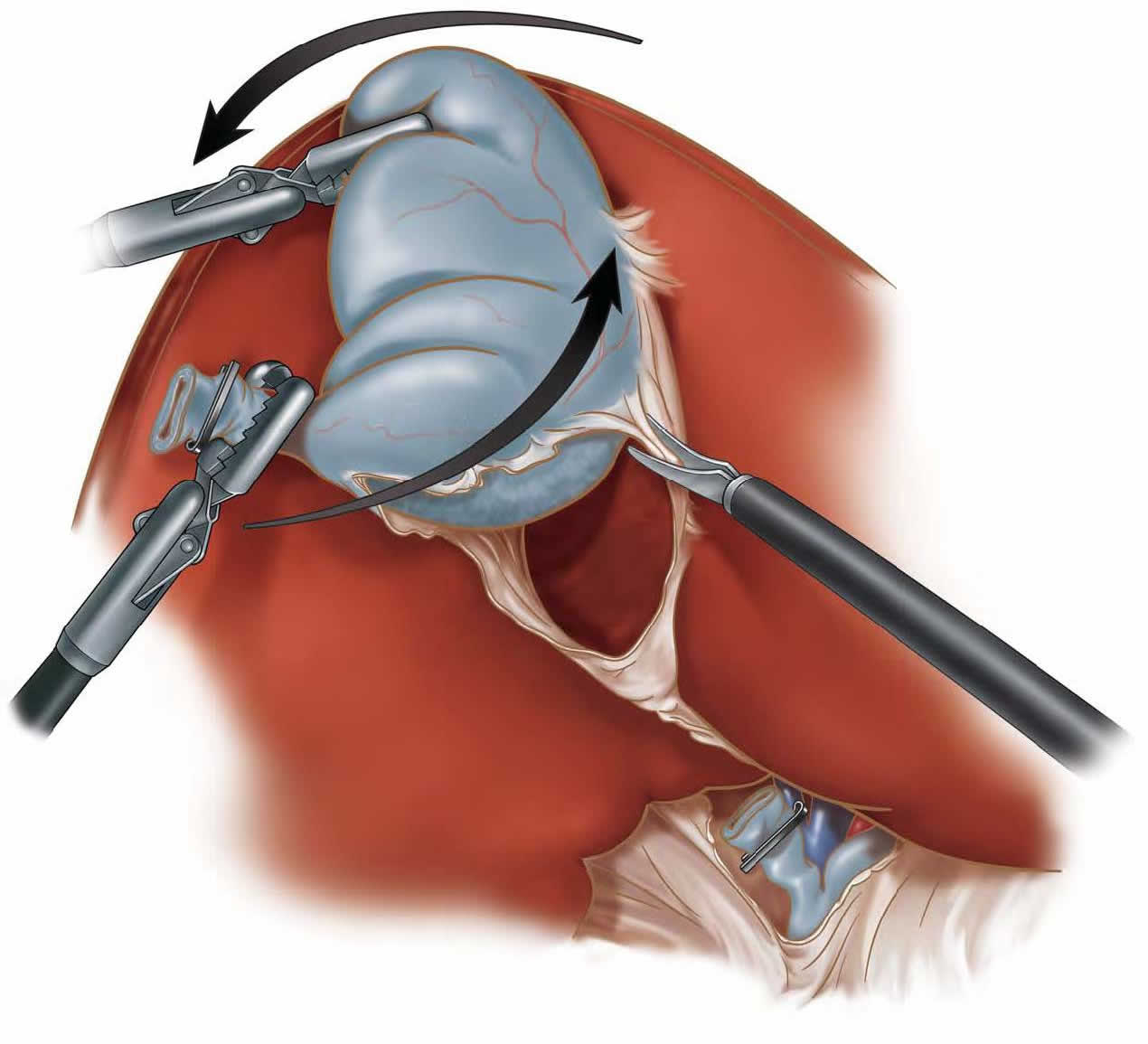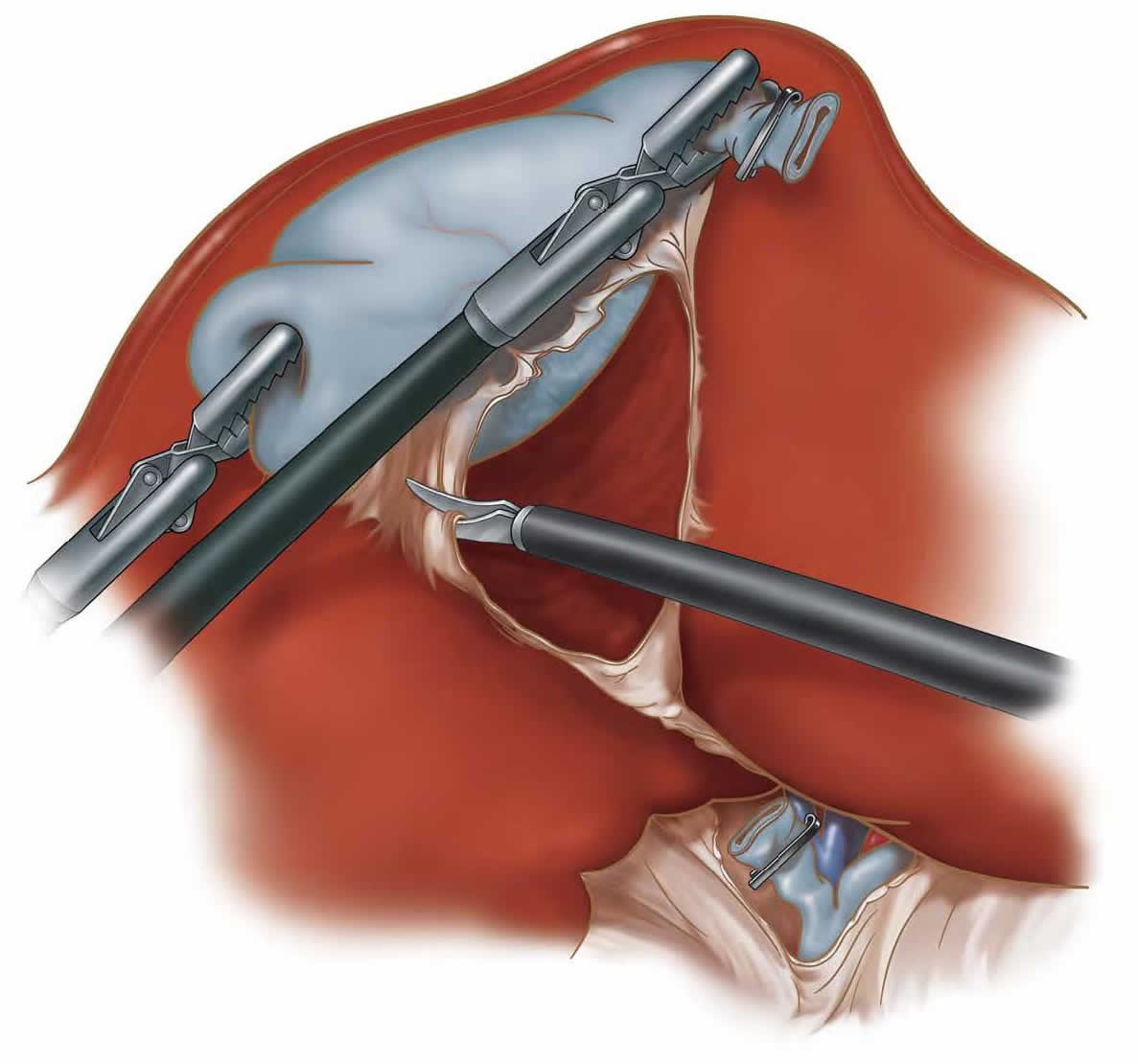Laparoscopic Cholecystectomy
Gallbladder Removal
Gallbladder:
The gallbladder is located beneath the right side of the liver. It is a pear-shaped sac that stores bile made by the liver. Upon ingestion of a meal, bile empties from the gallbladder into the small intestines to aide in fatty food digestion. If the gallbladder is removed, bile is released from the liver directly into the intestines.
Symptoms:
Gallstones are the most common cause of symptoms associated with gallbladder disease. Concentrated bile forms sludge and sedimentation leading to gallstone formation. The passageway (duct) from the gallbladder to the intestines may become blocked by this debris. Blockage may produce the following symptoms:
- Nausea after fatty meal ingestion
- Right upper quadrant abdominal pain
- Vomiting
- Fevers and chills
- Indigestion
- Jaundice
Diagnosis:
Abdominal ultrasound is the preferred test for evaluating patients believed to have gallbladder problems. This test identifies the gallstones, duct blockage, duct dilatation, and gallbladder wall inflammation.
Surgery:
Laparoscopic gallbladder removal rather than open removal is the treatment of choice for treating gallbladder disease. Laparoscopic removal involves four quarter-inch incisions through which a camera and instruments are placed. Open gallbladder removal requires a 5-10 inch incision. Both techniques require general anesthesia. However, patients may be discharged the day of surgery with the laparoscopic approach compared to a hospital stay of 3-7 days with the open technique.
Recovery:
Patients recover sooner after laparoscopic gallbladder removal. Return to activities can occur within 3-7 days compared to 4-6 weeks with an open approach. Pain experienced by the open technique is greater and longer lasting. The cosmetic results of four small incisions made with the laparoscopic approach are more pleasing than the one large incision used for the open technique.
Pertinent References
Frantzides, C.T. and Condon, R.E.: Postcholecystectomy syndrome. In Problems in General Surgery. Sperantza, V. and Barbara, L., Eds. J.B. Lippincott Co. 8:604-608, 1991.
Frantzides, C.T. The first laparoscopic cholecystectomies in Cyprus. Cypr Med J 10:3-5, 1992.
Ludwig, K.A., Carlson, M.A., and Frantzides, C.T. Postoperative myoelectric motility patterns in open versus laparoscopic cholecystectomy. J. Laparoendosc Surg. 3: 461-466, 1993.
Frantzides, CT, and Sykes, A: A Re-Evaluation of Antibiotic Prophylaxis in Laparoscopic Cholecystectomy. J Laparoendosc Surg. 4:375-378, 1994.
Ludwig, K.A., and Frantzides, C.T.: Laparoscopic cholecystectomy. In Laparoscopic and Thoracoscopic Surgery. Ed. Frantzides, Mosby-Yearbook Inc., 1994.
Frantzides, CT, Carlson, MA; Laparoscopic Cholecystectomy; In Atlas of Minimally Invasive Surgery. Frantzides, Carlson (ed.) Elsevier 2008.




